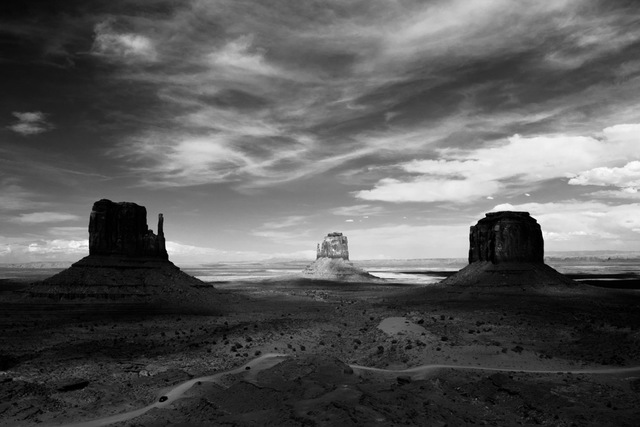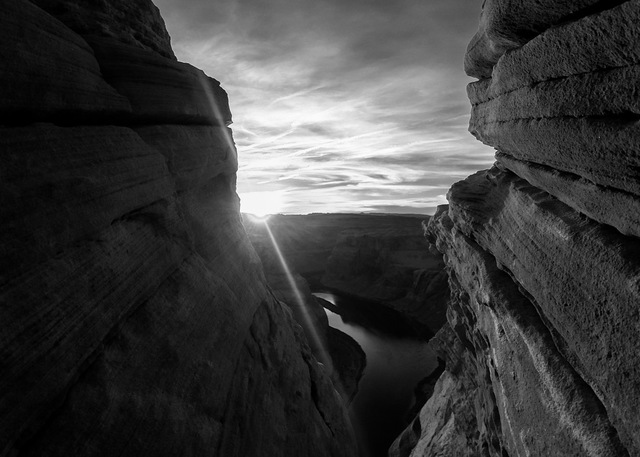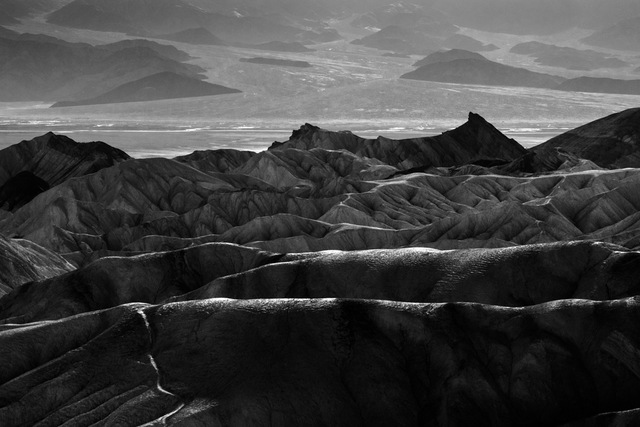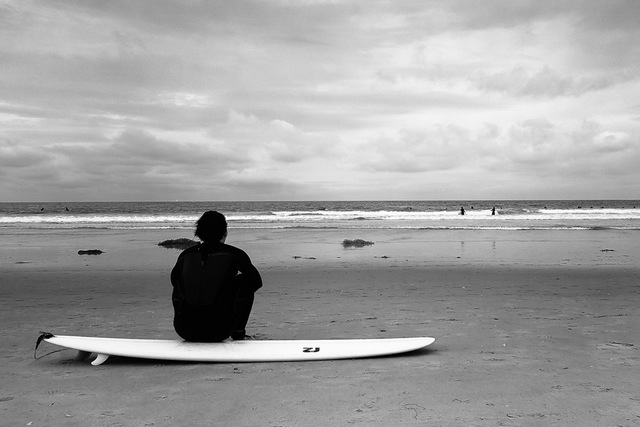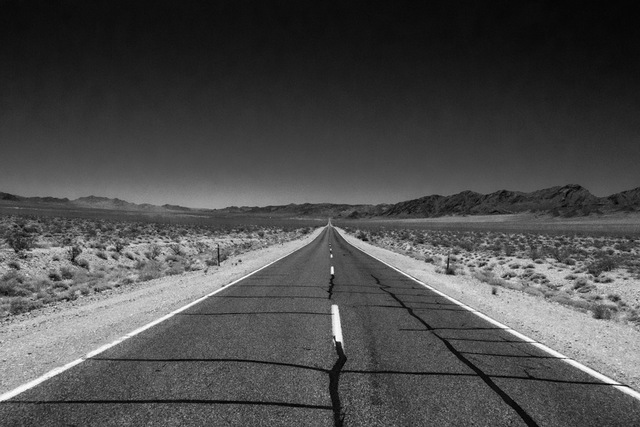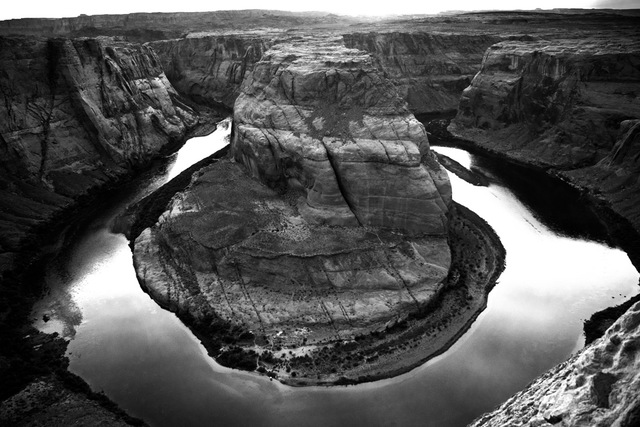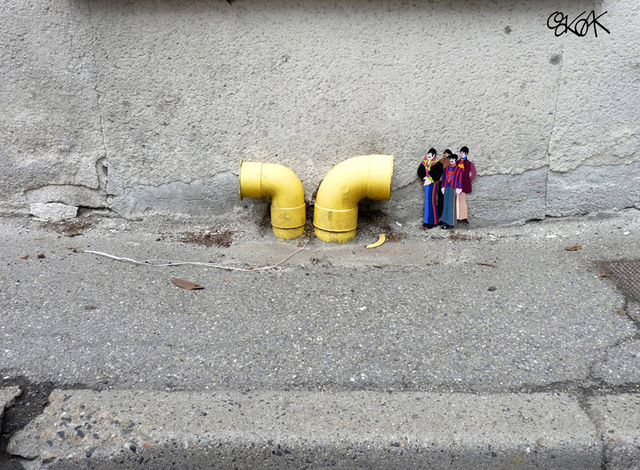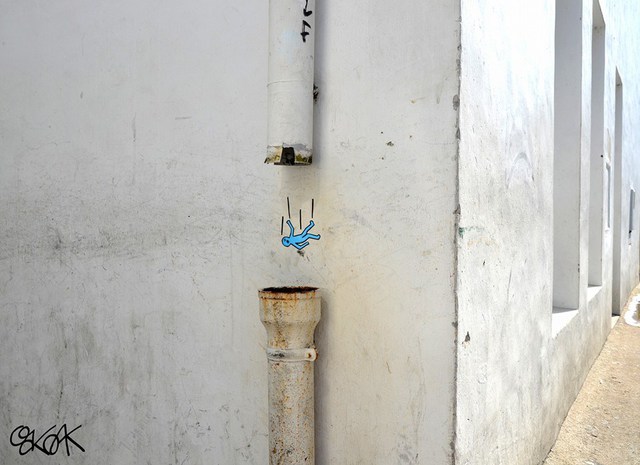The Chip Shop Awards are a different beast entirely. If you live in the UK, they’re something of a minor celebrity in the events calendar; a place where the inspired and the profane sit side by side, chaotically intermingling. Once a year, we’re invited to consider questions that lie at the beating heart of advertising culture. What makes a subversive and disruptive ad? Can creativity ever truly run wild without limits? Where does the scatological end and the obscene begin? The event is more than just about competing for a big yellow chip; like all advertising awards it prompts us to look inwards and consider our triumphs and failures as an industry.
It’s also the story of one man, a man who has outgrown his association with the awards, but without whom there would be none. His name is Andy Cheetham, and if you haven’t heard of him you’ve probably heard of his agency:Cheetham Bell JWT. An agency with the motto “The Power of Simple”, the story of the Chip Shop Awards is anything but. Yet it’s one of the few great stories in advertising and if Cheetham’s recollections are to be believed, a tale of no little drama and near financial ruin.
The legend goes like this: Back in 1991, recently made redundant and with bleak hopes, Cheetham along with his then partner Tony Veasey decided to do what so many of us have done – make some spec ads. But these were different. Rather than picking a brand and knocking out a few portfolio pieces, Cheetham decided to leverage family connections and make a series of ads for Barnacles Fish and Chip Shop, a business run by his Mother.
In his own words:
“Mum owned a chippie called Barnacles, up in north Wales. She’d taken the odd ad in the local paper and her fish and chips were flashed up on-screen for 20 seconds before the big picture at the local flea-pit. But that was the extent of Barnacle’s foray into the world of branding. So how could she not accept an offer of an original, bespoke ad campaign, covering all the advertising bases, for funny money?
The aim here had no real connection to helping out the family business (although one assumes that was a tangential effect). The aim was all about getting noticed within the industry, being the name on people’s lips, and entering their real ads into awards. It’s a brick wall we all butt our heads against trying to make it in this challenging business, competing to get recognised in a room of black sheep and loud voices. They set out to “get noticed, land decent jobs, and get on with our lives.”
Cheetham sold his house and sunk £14,000 into the project, along with all his freelance earnings. His car was stolen and the insurers refused to pay out. It’s a story that’s crying out for a movie adaptation. Finally, like beggars sneaking scraps at the table and unable to afford the tickets, they “sneaked in” to the 1991 Roses Awards. It was the moment of supreme truth and the biggest gamble of their lives. And it paid off. With eight awards in total for the Barnacles campaign, Cheetham was propelled back into the limelight. He now owns part of the agency which fired him in the first place. It’s almost too good to be true, a rare nugget of poetic irony.
The Drum has been running the Chip Shop Awards since 2002; “we missed a year in there somewhere” at the beginning says Editor ‘At Large’ Dave Birss. Coming to the event for the first time as an outsider I am full of misconceptions which quickly get corrected. All I knew prior to the full story was that the Chip Shop Awards were set up by ‘two young Manchester creatives”. In actuality the event has always been run by The Drum. “The Drum started the Chip Shop Awards. It didn’t buy them”, Birss tells Adland.
The award sponsors this year are “We Are Boutique”, a full service agency based in Leeds, specialising in Media Buying, PR, Digital, and SEO. I speak with Sarah Gough, Head of Earned Media, and ask her: What does Creativity mean to you?
“Creativity is the backbone to any big brand” she tells me. “We Are Boutique are a strategy focussed agency but the way we communicate is through creativity. It’s at the heart of the process behind any client work. We’re in a society with an awful lot going on, constantly exposed to so much. The only way to stand out is to offer something different which is expressed through creativity.”
Are the Chip Shop entries, renowned for being controversial, good for the industry?
“It’s really good for creative folk to have an outlet without limits. Political correctness is tougher than ever. Brand managers are being tighter than ever. We want to see quirky, weird and wonderful ideas out there, ads that would normally never get made or shown.”
But who are making these ads? I wander around aimlessly as per usual until I bump in to someone who looks like they might have an interesting story to tell. Lee Poynter is from Poole in the county of Dorset and works for the Ferrier Pearce Creative Group. His idea is ‘2 Facebook’, he explains. “It’s just a five minute simple idea – Your Facebook friends are not necessarily the ones you care about. And they probably don’t care what your kids are up to either.”
Cheekily, I ask him if he has kids himself. “No, but this didn’t come out of some deep seated resentment towards children! Just an idea that made us laugh.” So what made him decide to give the Chip Shop Awards a go? “The marketing guys suggested it. We entered a few and here we are. It’s nice to do something unconstrained, getting to make something funny, glib or offensive and get away with it. Getting away with it, I guess that’s the key point here.”
At this point in the evening I wander over to the bar with drink ticket in hand, and meet creative Dragos Giol, who has been working for the last four months for Publicis. We talk about life in the creative industries and eventually the topic comes around to his Chip Shop entry, a campaign for Virgin Active Gym called ‘It sucks to be last’.
I ask Dragos where the inspiration for his idea came from. He launches into his explanation with the animated interest of someone who doesn’t yet battle cynicism on a daily basis. “I’m always writing things that I find interesting down, to use them later. I read a line “Be nice to fat people. They might be useful at some point”. Then later I realised I could twist that message, but show it in a cheeky and funny way – which became ‘It sucks to be last”.
And what brings him to the Chip Shop Awards tonight? “I love edgy stuff”, he tells me. “Better to create stuff that some people love and some people hate than mediocre work which produces a ‘meh’ response. I want to create work that people really react to. In the industry there’s so much compromise. The client will always get the final say. Naturally, we end up with so many changes to our initial ideas.”
He’s raised a really interesting point here, so I pull him up on it. Don’t clients know their brands the best? Isn’t it arrogant for creatives to think we always know what’s right? He doesn’t skip a beat.
“If you’re really passionate about advertising you do so much research – eventually you end up knowing the brand almost as well as they do. You may not have those years of experience but you might be in a position to come up with something edgy that you know will have a positive effect on the brand. But of course, clients will always want to play it safe.”
As creatives, is that our job then? Do we always have an obligation to push things?
“Yes, but depending on the audience and using judgment and good taste. We make work to get into people’s heads and get a reaction. But for me it all starts in research, and its research along with understanding your brands will always be the key.”
We’re ushered inside as the entertainment part of the evening gets underway, past a Victorian-style ‘peep box’ and along the long open corridor that leads into Proud Camden. Before the awards kick off in earnest, we’re treated to a performance by Beatboxing trio Duke – a great match for the untrammelled creativity that’s about to go on show. “There are no instruments! This is all live!” the band informs a room of increasingly drunken ad people, hamming in a point which is easily forgotten. They spit sic beats, jumping from genre to genre and somehow making a dubstep and bhangra mashup not only work, but sound amazing.
Awards are given out. Cheers echo, muffled into a hall packed with bodies. Dave Birss presents the evening, a raucous embodiment of discord, himself a Chip anthropomorphically personified. He teases the crowd when they’re too slow “Get the fuck up here already”, or not cheering loud enough. On a rare occasion where a piece of work is awarded with no one to collect, they are ridiculed mercilessly. “No one here? Too far to come? Couldn’t be arsed? Forget them!”
Afterwards in the post-awards glow, I’m sought out by an agency CEO who has got rather drunk and mistaken me for the event photographer. I offer to take the pictures anyway and get to hear a bit of a rant when I ask him if his agency has won any Chips. “Fucking wankers! Fuck the Chip Shop! Our campaign deserved to win, and we got nothing. Fuck ‘em, we won’t come back next year.” It’s always like this straight after awards are presented. Tempers flare and harsh words are spoken. It’s empty posturing, a letting off of steam, an act of knowing bravado. There’s always an agency that brings down half their office, drinks too much and complains vocally to anyone who will listen. At this point, it’s probably an advertising tradition. They’ll be back. We’ll all be back.
Propped up against the bar, creatives from the One Minute Briefs community are buying drinks and making jokes. I speak with one industry professional, a copywriter and filmmaker who addresses a problem I’ve now heard a few times.
“Chip Shop is a great evening but let’s be honest, £85 for a pint, a piece of pizza and standing room only is a fucking rip off. A lot of people will have their agency paying the bill – but when you’re a freelancer or a student and you actually want to enter something and come along – it’s pretty damn expensive. The Chip Shops are meant to be a renegade awards show, but they’re not charging renegade prices.”
The advertising industry is an expensive business; shouldn’t we come to expect this by now?
“You’d at least expect a few bottles of wine at this price” I’m told.
“It’s not fair to sell yourself as being about freedom and then charge so much. The simple fact is that agencies can afford to put teams of creatives and time and money into winning awards. What I’d like to see in the future, is it being as accessible to those outside agencies.”
This is the only downer to an otherwise extremely enjoyable night, which showcases a wide range of great ideas and inventive talent. Dragos Giol has walked away with two Chips, one for Best Use of Honesty, and a second as the coveted Chairman’s Award. He’s not complaining. Nor is anyone who’s leaving with a trophy. Is this a case of sore losers, or is pricing a sore point?
@doritosyndrome would you have any extra pass? The tickets are too expensive for students!— Simone Mascagni (@SimoneMascagni) June 13, 2015
I bring these concerns to Dave Birss himself, who credit where it’s due, actually answers them:
I’m not going to go on the defensive about the entry cost or award show ticket price. But I’m happy to be totally open about it.
I used to be one of those creatives who’d complain about the cost of awards. But in recent years I’ve judged most of the big gongs. And I’m involved in a number of The Drum’s awards. That’s given me an inside view of what it takes to run an awards scheme.
The awards process is a year-round cycle that requires staff to run. They need to publicise the call for entry, sort through all the work, recruit great judges and get them in one place to do their judging, arrange an event that does justice to the work, sit down and work out what they could do better – and then it starts all over again. There are a lot of costs in there.
Many awards get sponsors to help reduce the entry and award show costs. But the Chip Shop Awards attract controversy, which makes a lot of companies nervous. At present We Are Boutique are the only company brave enough to associate themselves with the Chip Shops (a big thanks to them for doing so!)
The real question, as with any product or service, is how much value do customers get out of it. Obviously winners get a lot more value out of it than anyone else. So it’s rare to hear them complain.
Not a very interesting answer, I’m afraid. But an honest one nonetheless!
As the lights dim on another party and the DJ plays a set to an empty room, I turn to a random girl and ask her ‘Did you win any Chips?’ ‘What do you mean?’ she says. She clearly thinks I’m mad. As the advertising people have left, Proud Camden has started letting ordinary punters back in. Chips, like Lions, mean nothing to those outside our myopic world, but to those in the bubble, they mean more than words can say.
In 2005 Andy Cheetham wrote:
The Chip Shop Awards allow those great ideas – ones that otherwise may have had no recognition – to be celebrated. No matter how a piece of work came about, brief or no brief, client or no client, a great idea is still a great idea. And those creatives who have the drive to make things happen, deserve the reward.
Yet with big agencies like DigitasLBi, Stein IAS, RPM and others clearing up the top awards, is this really the vision Andy and Tony had for their rebel two-fingers to the advertising industry? The organisers of the Chip Shop can’t be blamed that top agencies are entering with great work; work which deserves to win. The alternative, banning work from large agencies would be pointless and counter-productive.
One gets the feeling that the original concept behind all of this was about striking out, being the underdog, an outsider who steals victory from the jaws of defeat.
And that’s the problem with big agencies. They can’t steal victory. They’re already winning.















